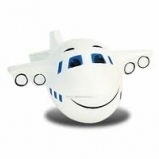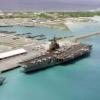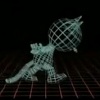
-
Content Count
16,258 -
Donations
$35.00 -
Joined
-
Last visited
Community Reputation
17,769 ExcellentAbout Chock
-
Rank
Member - 10,000+
- Birthday 08/27/1965
Contact Methods
-
Website URL
https://www.youtube.com/channel/UCHrETrGXqHI2AnowkWcsNZA?view_as=subscriber
Profile Information
-
Gender
Male
-
Location
Her Brittanic Majesty's Kingdom of Englandshire
-
Interests
Cake
Flight Sim Profile
-
Commercial Member
No
-
Online Flight Organization Membership
IVAO
-
Virtual Airlines
Yes
Profile Fields
-
About Me
I'm lovely. Ask anyone.
Recent Profile Visitors
44,423 profile views
-

Dumb question - What are "bespoke" textures?
Chock replied to slait's topic in Microsoft Flight Simulator (2020)
When using the term bespoke to describe the textures on a new airport model for a flight sim, they are indeed being somewhat pretentious. As the structure of the word bespoke suggests, it is a derivative of the verb 'bespeak', meaning 'to speak for', and this is in the sense of making an arrangement or an order for something by speaking with the craftsman to specify what you want (traditionally this would most likely be a custom-tailored item of clothing such as a suit, hat, pair of boots etc), thus making that item which you spoke to the maker about in terms of your requirements, a 'bespoke' item, as opposed to being 'off the shelf'. Since nobody specially ordered the textures used for the production of the 3D models used in Fiji airport from Inibuilds, those textures quite literally cannot be bespoke in nature and it is therefore an word not allowed pretentious use of the term to claim they are bespoke. Oddly enough, I used to work for a company years ago where we actually did use the term bespoke in its correct form when producing stuff. In this case it was artwork. We used to have two types of jobs we would produce print artwork for, these being 'repeats' and 'bespokes': A bespoke job was always a new custom ordered job where we made one-off completely new artwork for that client, whereas a repeat was where we would pull old previously-used artwork out of our file system so we could print some more copies of it for the same client. Ironically, this meant that what was originally a bepoke job which we'd filed the artwork for after printing that job, could then be re-ordered whereupon it would no longer be a bespoke job, but a repeat, a bit like a tailor using an existing pattern to make a second suit from an original bespoke pattern. So unless one was absolutely, genuinely producing a custom one-off order specially for someone, a product is not bespoke and it would be entirely incorrect to use the term in other circumstances. This is sort of similar to the equally ridiculous use of the word 'designer' these days as a marketing term, where gullible people are impressed by hearing: it's a 'designer' jacket' or, it's a 'designer' handbag or whatever. It does make me wonder if these people actually suppose that less pretentiously marketed jackets and handbags are somehow able to pop into existence without needing a designer as part of the process of producing these items. -

IniBuilds brand new P-40 £7.99+tax, just for today!..
Chock replied to bobcat999's topic in Microsoft Flight Simulator (2020)
Use the toggle switch on the centre of the panel; this swaps it for a WW2 period gunsight mount -

IniBuilds brand new P-40 £7.99+tax, just for today!..
Chock replied to bobcat999's topic in Microsoft Flight Simulator (2020)
Well worth having, especially at this price. -

SimWorks Studios is developing the B-52
Chock replied to Paul K's topic in Microsoft Flight Simulator (2020)
Hope it has the CRM-114 simulated. 😄 -

Loving the bad weather in the UK right now!
Chock replied to V1ROTA7E's topic in Microsoft Flight Simulator (2020)
Some aircraft do have a removable tail prop to prevent the thing going completely onto its tail (notably the ATR-72, and it is part of the pre-start/taxi checklists for tyhe crew to note that it is removed and stowed in the rear cabin area, although the dispatcher normally removes it and hands it to the crew and it is checked on the headset walkaround too, so there isn't much chance of it being forgotten and left on their by mistake although I have heard that apparently this has happened once or twice). For most aircraft, there is no such tail prop precautionary device, it's just a case of being aware of the risk and working according to that when loading and unloading. So, typically you unload the back first, then unload the front, and when loading it up, you load the front first and then the back. Any time you don't stick rigidly to that rule, you keep an eye on things carefully. Some of the riskiest aeroplanes for potentially tipping are the B737-800 and 900 variants. Typically what happens with these is that when they are inbound to land, we get a message sent from their origin airport with details of what is on board and where it is placed and the trim/balance there is as a result of this loadout (the tail tip risk is displayed as a percentage) of the weight/balance point. 48 percent is rated as critical for a 737, but we regard figures very much lower than this as something to be wary of. So, what we do is get some airstairs on the back exit door to allow passengers in the rear to deplane ASAP (if we don't do this, what can happen is people start getting off the front via the jet bridge, but some passenger might be dithering about in the middle seating area, meaning nobody can move forward past them whilst the front is emptying, which then makes the aeroplane really tail-heavy). If that occurs (and it does quite often) it would be on the crew to stop the deboarding process. Meanwhile down on the ramp we do our best to offload the rear cargo hold ASAP to get the weight off the back, but even then the tail can start dropping quite a bit and the nose gear suspension then starts extending quite alarmingly because of that issue with passengers being unable to get off the back. If we see this, we'll let the crew know but what we will also often do, is throw bags up the forward hold to the exit and maybe even get some more people in the front cargo hold doorway to give the thing some weight well forward of the main gear. So, when we offload a 737, we usually end up stood there making a judgement on when to start getting stuff off the front based on how many passengers are still in the back hald of the aeroplane and how extended the nose gear oleo is; if the anti-torque scissor link joint is at less than 45 degrees, we're usually good to commence unloading. Back with the ATR-72 and the risk of tail-tipping, we used to wait until at least 12 passengers were on board in the forward cabin before we would start loading the rear hold and we would of course load the forward hold first to further help matters. I also tend to attach the towbar and tug ASAP to help in this regard. -

Loving the bad weather in the UK right now!
Chock replied to V1ROTA7E's topic in Microsoft Flight Simulator (2020)
As others pointed out, the issue in the UK when it snows is the fact that settled snow frequently turns to deep watery slush fairly quickly in daylight with the temps being above freezing, but before this has chance to dry out or evaporate, when the temperature drops at night all of that slushy partially melted snow freezes into a very thick layer of ice. This makes roads, runways and taxiways hazardous and difficult to clear too. At EGCC earlier this week, it started snowing at around 4.30am and kept going for a few hours. Most of this stuff did not stick but operations were stopped for a couple of hours starting sometime around 9am, this was whilst the airport's snowploughs and blowers did their best to push snow into some out of the way piles and a few inbound European and several outbound flights were cancelled during that time, but the airport was operational again just before 12 noon. Having said that, there was some difficulty in stand availability as aeroplanes sat there awaiting departure or towing off to a remote stand to free up a space allow inbound flights onto a clear stand equiped with an airbridge. For example, I had a Brussels flight which was initially meant to come onto Stand 109, so I started sending GSE there, then it got switched to 103, so we moved the gear there, then it got switched to 202L, all whilst it was holding just off the runway, so we had to get everything to the stand it eventually came onto. This sort of stuff all led to a few knock-on issues, for example, an Air France A319's crew went out of hours whilst waiting for a de-ice which meant passengers and bags had to be offloaded, this meant that A319 departed the following day as a positioner back to LFPG with only crew bags on board. that same day another Air France Airbus, this time an A321, flew in to us from LFPG. Since we only had two Air France AKH ULDs on station, it arrived with four empty AKHs in the front and the full ones with the bags in the back, four of those. We had to offload these empty cans first in order to get them to the bag hall and spin them for use with the onload outbound bags, which meant that (unusually), we were offloading the front hold before the rear one (you wouldn't normally do this because of the risk of tail-tipping). So this thing eventually went out five ULDs full of bags in the back hold stations, three of these ULDs having come in on the flight just an hour before with the other two being those we had at EGCC. Everyone did a remarkable job on that flight to get it offloaded and onloaded so quickly. -

How many hours are u simming each day?
Chock replied to Sunshine13's topic in Microsoft Flight Simulator (2020)
I'm a bit too busy with the real things at the moment: I just switched jobs from Menzies Aviation, to Star Handling (which used to be Stobart) so currently flight sims are on the back burner whilst I wrestles with the real aircraft and all the differences in procedures I have to follow. Having changed to working for a different service agent, and now as a Team Leader, I've had to spend the past few weeks doing a lot of training and recertifying on all the stuff you need for the job, but as of yesterday I am now signed off on most of that stuff. As noted, the trickiest part about making this switch is learning all the different procedures which different airlines have, such as the loading sequences for different bag classifications, different ID codes and so on, different arrival procedures etc. Star's TLs sometimes have to operate the Safedock and also have to operate the aircraft controls sometimes, whereas that's not normally the case at my former employer (i.e. even more responsibilities and training lol). Menzies serviced B.A, Icelandair, Sun Express, Loganair, Emerald, Vueling, Iberia, Aurigny, Kuwait and Aer Lingus, whereas Star services S.A.S, Baltic, Air France, KLM, Brussels, Eurowings and Norwegian. The difference with all that mostly concerns Star typically doing faster turnarounds than is usually the case at Menzies (so I'm doing several 35 min spins now), and Star do not currently service any props or widebodies, so it's just 737s, A320s, A220s, E195s and CRJs I now work on. Another difference is that most of Star's clients have bulk-loaded aircraft with only Air France A320s using containerised AKHs and PKCs, and another difference is I now have to start work at 04.30am, whereas it was typically 06.00am at Menzies (yawn). I'll get back to simming when I'm more comfortable with my new role, but that's gonna be a few more weeks I reckon. -
Boeing 247
-
Welcome to Avsim. 🙂 In relation to some plane spotting, if there is an airport local to you, see if it has a website with information that could be useful to you for that kind of stuff. Most airports are aware that doing anything to make them more popular with locals is a good thing and so they do tend to try to welcome plane enthusiasts, often providing specific viewing areas, dedicated mobile phone apps and the like. If however, there is nothing like that close to you or available, you could get hold of an air band radio so you can monitor flight traffic (be aware that in some countries it is not legal to listen to aircraft communications, and if that is the case for you, it's worth knowing that many air traffic control systems do stream their comms online for this reason so enthusiasts can still monitor this traffic). I would also recommend getting hold of the mobile phone app FlightRadar24, there is a free version of this, or you can pay a small subscription to get some enhanced features. This app will let you track aircraft via their transponders so you can see pictures of them, see their flight track on a map in realtime with altitude and speed data plus the route they are flying, ETA etc. Lots of us who work in aviation actually do use FlightRadar24, as it is quite handy for many jobs, notably for me as a ramp TL at EGCC for knowing when stuff is likely to arrive. There are more 'official' systems we have a at work such as the Chroma and SITA systems, but that app is still handy to have on your phone when out on the ramp.
-

Poll: Fenix customer wishes IAE or Remote CDU?
Chock replied to guenseli's topic in Microsoft Flight Simulator (2020)
Assuming that we end up with very accurately modeled engine variants which actually replicate the real-world differences, I'd prefer this option over a remote CDU. -
Nothing wrong with old stuff. Here's my 23 year old horse, with my 25 year old car behind her:
-
Was initially all over the place, piyching up on take off etc, but now it flies okay with modded files:
-
How I long for the days when people used to fill out all the correct paperwork to ensure their war was legal eh? Knowing you'd be shot or bombed legally made you feel all warm and fuzzy inside.
-
Like buses, you wait ages for one, then four turn up all at once. Microprose have not one, not two, not three, but FOUR new WW2 Bomber simulation titles coming: A redux version of the old Mighty Eighth game with new graphics, a new Mighty 100th title, a VR multiplayer Mighty Eighth game, plus Bomber 3, which also features the Flying Fortress. Be sure to wishlist them on your Steam account so you know when they release. Some screenshots and video etc can be seen at the link belowand the Steam product pages for these upcoming titles are up and running so you can favourite them: https://www.microprose.com/games/



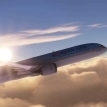
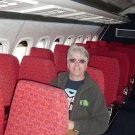
_Swastika_()_-_Rodnovery002.thumb.jpg.f785c8c5e0948894d973835b4a987085.jpg)
